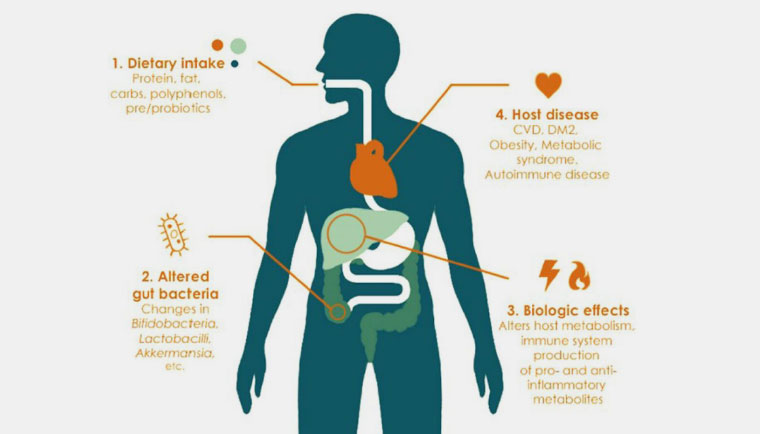Growth Effects of N-acylethanolamines on Gut Bacteria Reflect Altered Bacterial Abundances in Inflammatory Bowel Disease
By Katie. Golden, MD

As our understanding of the pathophysiologic picture of Inflammatory Bowel Diseases (IBD) is evolving, current research is illustrating an increasingly complex relationship between gut microorganisms and the host’s immune system that drives disease. While the earliest microbiome research focused on the microbial taxonomic changes in IBD, scientists are now recognizing that the gut metabolome is of equal importance. Small molecules, derived from the environment as well as host and bacterial cellular processes, are proving to be an integral component of the dynamic microbiome that is so intimately linked to intestinal homeostasis and dysbiosis.
In a recent study published in Nature Microbiology, researchers identify specific metabolites that play a role in the pathophysiology of IBD. The authors first identified lipid metabolites (N-acylethanolamines, or NAEs) that are differentially abundant in IBD, and then analyzed how they affect the growth of intestinal bacteria. They found that NAEs stimulated the growth of species that are well established to be aberrantly abundant in IBD patients, and furthermore restricted the growth of species that are depleted in disease. To analyze these findings under further scientific rigor, they treated healthy stool samples ex vivo with NAEs and analysed bacterial populations changes. In comparison to controls, the investigators observed taxonomic shifts in bacterial populations that mirrored microbiome composition in IBD. More specifically, metagenomic analysis revealed two bacterial shifts that are well-established changes characteristically seen in IBD: enhanced growth of Enterobacteriaceae, as well as proliferation of Proteobacteria at the expense of Bacteroides species.
Their results implicated enhanced NAE production as an important contributor to the pathologic bacterial growth that underlies IBD. In the final phase of their investigation, they used metatranscriptomic analysis to analyze exactly how NAEs alter bacterial cellular processes. They found that the bacterial respiratory chain played a critical role in the metabolism of the metabolites, which in turn induced upregulated cellular metabolism of facultative aerobes (Enterobacteriaceae), and a subsequent pro-inflammatory feedback loop that further increased NAE production. Their work not only advances our understanding of the metabolome’s role in disease, but also successfully identifies the potential for NAEs as both a therapeutic target and a biomarker of disease severity in IBD patients.
- Fornelos N, Franzosa EA, Bishai J, Annand JW, Oka A, Lloyd-Price J, Arthur TD, Garner A, Avila-Pacheco J, Haiser HJ, Tolonen AC, Porter JA, Clish CB, Sartor RB, Huttenhower C, Vlamakis H, Xavier RJ. Growth effects of N-acylethanolamines on gut bacteria reflect altered bacterial abundances in inflammatory bowel disease. Nat Microbiol. 2020 Jan 20.

